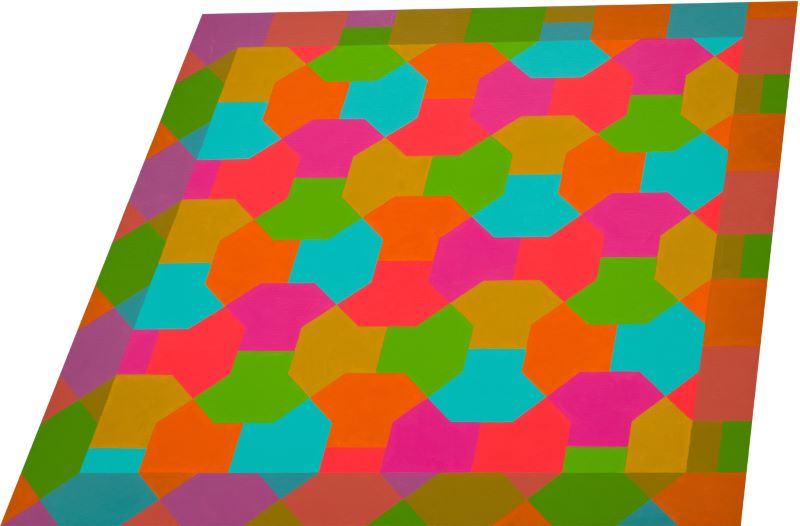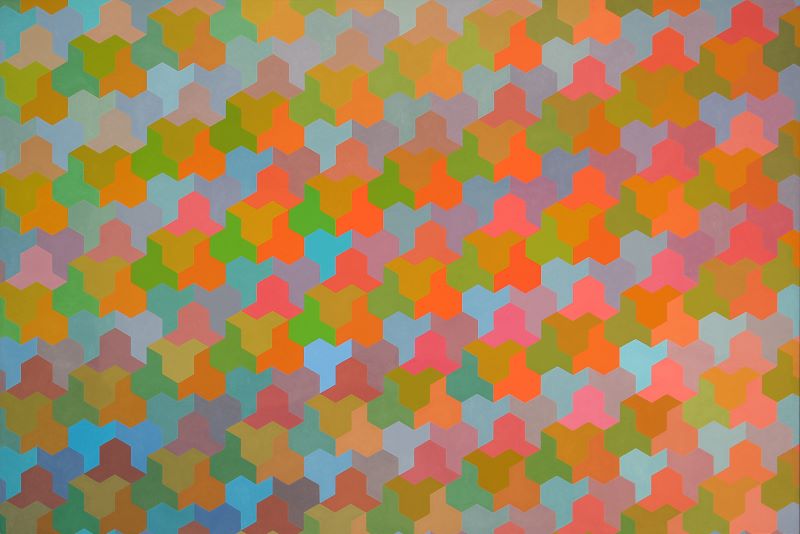George Woodman's tessellations. "George Woodman: A Democracy of Parts, Paintings 1966-1978," DC Moore Gallery, New York, 2025

Now on view:
George Woodman: A Democracy of Parts, Paintings 1966-1978 at DC Moore Gallery
535 W 22nd St, 2nd floor, New York
through May 3rd
Tessellations are a type of pattern in which one or more geometric shapes are repeated—and often rotated and reflected—to seamlessly cover a surface. In George Woodman’s case, that surface was a canvas. His work with this mathematical patterning system, which began in his Tuscan studio after seeing the famed Islamic patterned tiles at the Alhambra, distinguished his paintings and eventually evolved into two decades-worth of visual inquiry. This did not go unrecognized. In 1967, Woodman was awarded a fellowship from the National Endowment for the Arts. Pattern on Trapezoid—currently on view at DC Moore—was included in the catalogue and exhibition for fellowship recipients from the Southeast and Southwest at the Witte Museum in San Antonio. He then used his $5,000 in award money to purchase a farmhouse in Antella, Italy, just outside of Florence. There he set up a studio, allowing him to live and work in Italy for part of each year for the rest of his life, deeply influenced by the cultures of Europe and beyond.








